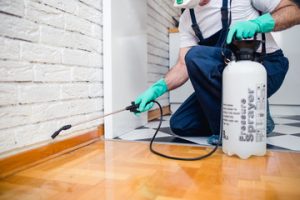Whether for investment or pleasure, collecting ancient art offers many rewards. Investing in this area requires an understanding of value drivers like provenance, condition, formal qualities, artist reputation, and market trends.
By establishing best practices and staying current on the legal landscape, Antichità Roma can successfully authenticate and appraise art and antiquities.

Expertise
To buy and sell antiques successfully, you must develop a strong sense of expertise in your field. This is not something that happens by accident; it takes years of experience. It is also a matter of being open to learning from other antique dealers, buyers, and experts. You can find them in a variety of places. One of the most obvious is online, where a simple search will cast a wide net and capture results showing an array of reputable antique dealers.
It is important to remember that antiques have a lot of sentimental value, and can often be bought because they represent a particular period of history, or a deceased loved one. It is important to separate your emotions from the process and remain objective when assessing an antique’s worth. It is easy to get carried away by the nostalgia of an item and pay over the odds. I once watched a collector shell out triple the market price for a beat-up old teacup, because it had belonged to her great-aunt. It was a costly mistake that could have been avoided with objectivity.
Another area of expertise is in identifying genuine pieces from the many fakes on the market. The process of learning to spot a fake is a bit like being a detective, piecing together clues to understand an antique’s past. Eventually, you will learn to spot the telltale signs, such as finishes that look too perfect and markings that don’t match the era.
The final area of expertise is in successful negotiation. When selling antiques, it is essential to be able to negotiate a fair price, which can be difficult if you are new to the process. This can be done by establishing clear communication with the buyer and insisting on a written agreement to minimize disputes in the future. It is also important to establish a payment method that is secure and to arrange insurance for the item during transit. By following these tips, you can ensure a positive, hassle-free selling experience. Good luck!
Knowledge
When it comes to buying or selling antiques, knowledge is a key factor in ensuring a smooth transaction. Having some background knowledge about the history and value of an item can help you determine whether it is authentic or not, as well as its price range. This can also be helpful when negotiating with buyers or trying to avoid scams.
Having an understanding of the history of different periods can provide insight into the styles and trends that have affected antique items over time. For example, learning to distinguish items made in the Georgian or Victorian eras can give you an idea of how old a particular piece is. It can also be beneficial to familiarize yourself with the different types of materials that have been used to make antiques, as this can indicate their age.
Another thing to keep in mind is that the value of antiques can fluctuate depending on supply and demand, as well as other economic factors. It is therefore important to stay up-to-date on the latest market trends. For instance, certain antiques may become more valuable around the holiday season or during specific economic climates.
Choosing a knowledgeable and reputable buyer is also crucial to the success of your sale. Look for buyers with positive testimonials from previous sellers, as this will instill confidence in their ability to accurately appraise your antiques and conduct fair transactions. You should also be sure to check the buyer’s reputation online, as this can give you an idea of their reliability and business practices.
Lastly, it is a good idea to visit antique shops and auction houses to see what items are available. This can be a great way to learn more about antiques and get inspired. It can also be a great way to meet fellow antique enthusiasts and gain some valuable tips on how to buy or sell antiques. Visiting an expert antique dealer can be particularly useful, as they will have extensive experience and knowledge in their field. They will be able to offer advice on valuations, sales methods, and how to spot fakes.
Trust
Whether your antiques have sentimental value or monetary value, it is important to work with a buyer you can trust. A trusted buyer will provide you with a fair price and a smooth selling experience. When determining who to work with, you should check their reputation online and ask friends or family members for recommendations. Having a strong presence in the community and participating in local shows and charity events is also a good sign. Look for a buyer who has been in business for years and has excellent feedback from past sellers.
An experienced antique dealer will have a solid understanding of different types of objects and will be able to identify specific styles, periods, materials, and makers. This knowledge allows them to accurately assess the value of your items and offer you a fair price based on real market value. They will also be able to tell the difference between mass-produced and authentic antique pieces.
Antiquities are works of art, architecture, or other cultural items that date back to the earliest civilizations. These include ancient Egypt, Greece, Rome, and other classical cultures, such as the Maya. These works of art have the power to connect us to the past and teach us about the evolution of human culture.
The collection at the Legion of Honor includes works of ancient art from various regions and periods, from the eighth century BC to the fifth century AD. This era is known as classic antiquity and encompasses the interwoven civilizations of ancient Greece and Rome. The exhibition features sculptures, figurines, vessels, jewelry, carved reliefs, and more.
The sale of antiques can be a difficult process because it involves assessing the object’s authenticity and its worth. Fortunately, there are many ways to avoid scams when selling antiques. You should always get an expert opinion before making a purchase and always be prepared to negotiate. By following these tips, you can find a trustworthy buyer and ensure that your antiques are treated with care and respect.
Transparency
The antiques market is a thriving and vibrant one, but it’s also a vulnerable arena for money laundering. Recent investigations and prosecutions have highlighted the extent to which the art industry can be used to launder funds. This makes it crucial for collectors, dealers, and auction houses to implement strict compliance measures and prioritize transparency.
In addition, antique enthusiasts need to understand the market and its dynamics to make informed purchasing decisions. Educating themselves about market trends, recognizing undervalued items, and understanding the importance of provenance are all critical to making ethical, successful purchases.
Antique furniture, vintage goods, and retro items are popular among buyers who are seeking to purchase items that not only add character and value to their homes but also possess a rich history. However, the global art and antiquities markets are rife with illegally obtained and illicitly sold items. Despite international and national regulations and agreements designed to protect cultural heritage, organized criminal groups continue to profit from the destruction, looting, and trafficking of archaeological treasures and relics. Insufficient oversight and a lack of transparency in the art market make it easy for criminals to exploit the industry for money laundering purposes.
A thorough knowledge of antique furniture, vintage goods, and retro items can help discerning buyers avoid these pitfalls and navigate the market like seasoned professionals. Prioritizing authenticity, provenance, and transparency is essential to ensuring a safe and secure marketplace.
Verifying provenance involves tracing an item’s history of ownership. This process is complex and requires the expertise of experts who can examine historical records, consult with historians, and cross-reference documentation. Documents such as certificates of authenticity and endorsements from reputable institutions further enhance the credibility of an item’s history and origin.
The world of antiques is a fascinating and complex one. Navigating this thriving and influential market means prioritizing authenticity, provenance, and transparency to ensure a safe and secure marketplace. Staying educated about market trends, embracing best practices, and prioritizing transparency are all key to navigating this exciting and rewarding sector. With these principles in mind, antique buyers can feel confident in their ability to purchase quality items at fair prices while adhering to strict ethical standards.


